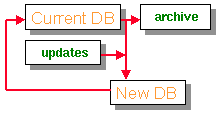Inconsistency is the primary reason: If information appears in more than one place in the database, it can become inconsistent, e.g. if it is changed in one place but not the other(s).

student number course (SLN) transaction ID (primary key) grade
[These are not the only acceptable responses.]